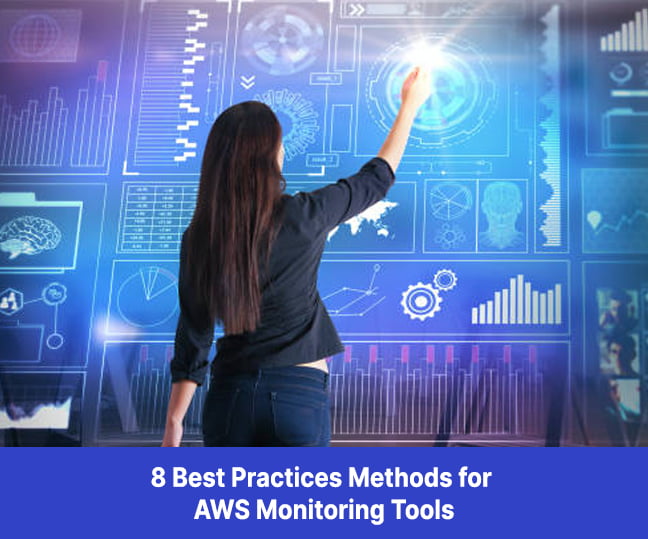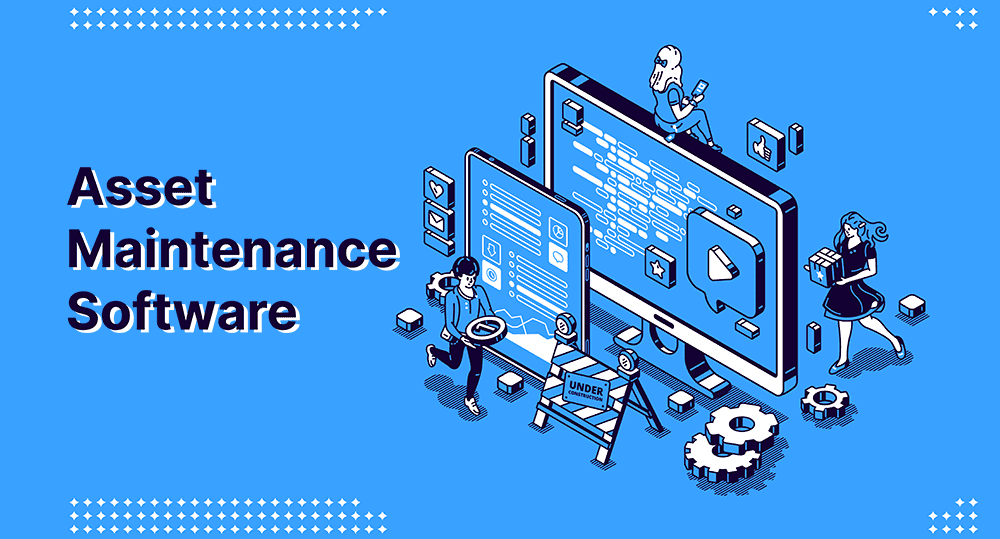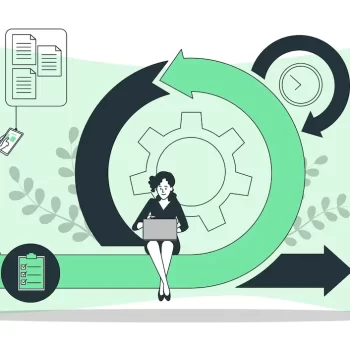ITIL Software, which stands for Information Technology Infrastructure Library, embodies a service-oriented approach to automation. Through software solutions, businesses can create a centralized framework that enables them to map, select, deliver, and monitor their IT services with a comprehensive perspective.
To help you navigate the process of implementing ITIL V4 software strategies for enhanced efficiency and increased productivity, here is a step-by-step guide:
Access: Begin by assessing your current IT service management practices and identifying opportunities for improvement. Understand your organization’s specific needs and objectives to effectively connect them with the ITIL framework.
Plan: Create a well-defined strategy and roadmap for implementing ITIL V4. Establish clear objectives, timetables, and the required resources to guarantee a smooth transition.
Customize: Tailor the ITIL V4 software solutions to your unique business needs. For best outcomes, tailor the framework to your organization’s structure, processes, and workflows.
Train: Educate your employees on the ITIL V4 principles and practices. Provide extensive training to ensure everyone understands their roles and responsibilities and how to use the software efficiently.
Implement: Carry out the planned ITIL V4 software strategy in stages. Gradually introduce new procedures, technologies, and workflows to minimize disruption and allow for specific adaptation.
Monitor: Monitor the implementation progress and continuously evaluate the ITIL V4 software solutions’ efficiency. Track metrics with key performance indicators (KPIs) and find areas for improvement.
Optimize: Regularly review and optimize your ITIL V4 practices to maximize efficiency and productivity. Accept feedback from stakeholders and make the required changes to improve the effectiveness of the software implementation.
Here is the complete guide to the steps involved in implementing ITIL V4 software strategies for greater efficiency and higher productivity.
8 Steps To ITIL Software Deployment
Map The Processes
Process mapping is crucial for a successful ITIL software implementation. It involves identifying and documenting all relevant processes within your organization. By mapping out the process, you understand how different activities and functions are interconnected. This step helps identify areas where ITIL principles and practices can be applied to streamline operations, improve efficiency, and deliver better IT services.
During the process mapping phase, it is essential to involve key stakeholders and subject matter experts from different departments. Their input and insights can provide valuable perspectives on existing processes and potential areas for improvement. Additionally, use process mapping tools or software to represent the processes and their interdependencies visually.
Service Definition
Defining and aligning your business with IT services is crucial for effective ITIL implementation. Identify your organization’s key services and understand how IT systems and infrastructure support them. This step helps establish a clear linkage between business objectives and IT services, enabling a more focused and targeted approach to ITIL implementation.
By defining your services, you can prioritize and allocate resources effectively. It lets you focus on the IT services that impact your business most and ensure proper management and delivery. Additionally, this step helps establish service level agreements (SLAs) and define metrics to measure the performance of IT services.
Introducing ITIL Roles and Owners
Introducing ITIL Roles and Owners ITIL defines various roles and responsibilities essential for effective service management. During this step, you must identify the ITIL roles relevant to your organization and assign owners for each role. These owners will oversee the implementation and ongoing management of the processes associated with their respective roles.
It is important to note that only some ITIL roles are mandatory for some organizations. Roles should be selected based on your organization’s specific needs and goals. Assigning owners to these roles ensures clear accountability and enables effective coordination and collaboration during the implementation process.
Spread Awareness and Communicate the Change
Implementing ITIL software change processes, roles, and responsibilities within your organization. Communicating these changes effectively to all stakeholders, including employees, managers, and IT teams, is crucial. This step helps create awareness and understanding of the benefits of ITIL software implementation and promotes a positive mindset toward the changes.
Transparent communication about the implementation plan, timelines, and expected outcomes helps mitigate resistance and fosters a collaborative environment. Additionally, provide training and support to ensure employees have the necessary skills to adapt to the changes and make the most of the ITIL software.
Implement and Monitor the Change
Once the groundwork is in place, it’s time to implement the ITIL software and execute the planned processes. Implementing ITIL is an iterative process, and monitoring the impact of the changes as they unfold is essential. It involves regularly assessing the effectiveness of the implemented processes and making necessary adjustments to improve performance.
Monitoring the change also involves tracking key performance indicators (KPIs) and metrics defined during the service definition phase. These KPIs provide insights into the performance of IT services, allowing you to identify areas that require further attention and improvement. Regular review and monitoring enable continuous refinement of the ITIL software implementation and contribute to ongoing process improvement.

Optimization and Improvement
Optimizing ITIL processes go beyond the initial implementation. It involves continuously reviewing and refining the processes to ensure they are aligned with changing business needs and industry best practices. By analyzing the performance data and stakeholder feedback, you can identify areas for improvement and implement necessary changes to enhance efficiency and effectiveness.
Automation plays a significant role in optimizing ITIL processes. Identify repetitive and manual tasks that can be automated using the ITIL software. It helps eliminate human errors, reduce manual effort, and improve productivity. Leveraging automation tools and technologies enable better integration between different ITIL processes, leading to smoother and more streamlined operations.
Process Control
Process control is essential for maintaining IT services’ desired performance and quality. Key performance indicators (KPIs) provide measurable metrics that help evaluate the effectiveness of ITIL processes. Establish a process control framework that includes defining relevant KPIs, collecting data, analyzing performance, and taking corrective actions when necessary.
Using monitoring tools and software, you can automate the collection and analysis of KPI data, providing real-time insights into the performance of IT services. Data visualization techniques can help present KPI data in a meaningful and actionable way, enabling informed decision-making and continuous improvement.
Implementation Roadmap
An implementation roadmap outlines the ITIL journey’s key milestones, activities, and timelines. It provides a structured approach to the implementation process and ensures all stakeholders are on the same page. The roadmap should include each implementation phase’s objectives, dependencies, and resource requirements.
A practical implementation roadmap also considers the scalability and sustainability of the ITIL software. As your organization evolves, the ITIL software should be flexible enough to accommodate future growth and changing requirements. Regular reviews and updates to the roadmap help align ITIL practices with evolving business needs and technology advancements.
By following these steps, you can successfully implement ITIL V4 software strategies, improving operational efficiency and increasing productivity within your organization.
Why Choose Infraon for ITIL Software?
When implementing ITIL Software, careful consideration is crucial for ensuring its effectiveness in meeting your requirements. It is where Infraon stands out by providing tailored ITIL software solutions that simplify your tasks.
When it comes to ITIL software deployment, Infraon offers a wealth of expertise and a comprehensive range of solutions that cover every stage of the process. With Infraon as your trusted partner, you can rely on their support at every step to ensure a successful ITIL implementation.
- Strategic Roadmap: Infraon works closely with your organization to devise a strategic roadmap for your ITIL journey. Their team of experts collaborates with you to understand your unique requirements, goals, and challenges, crafting a customized plan that aligns with your business objectives.
- Software Selection: Choosing the right ITIL software is crucial for the success of your implementation. Infraon guides you through the software selection process, helping you evaluate various options and identify the best solution for your organization’s needs. Their extensive knowledge of ITIL software ensures that you make an informed decision.
- Tailored Solutions: Infraon understands that every organization has unique processes and workflows. They specialize in delivering tailored ITIL solutions to align with your existing infrastructure and meet your requirements. This personalized approach ensures that the ITIL software seamlessly integrates into your organization, optimizing its benefits.
- Implementation Support: Infraon provides comprehensive support throughout the implementation process. Their team of experts oversees the deployment, ensuring that the ITIL software is correctly installed, configured, and integrated with your existing systems. They work closely with your internal teams, offering guidance and assistance to ensure a smooth transition.
- Ongoing Support and Maintenance: After the initial implementation, Infraon continues to provide ongoing support and maintenance for your ITIL software. They offer regular updates, bug fixes, and enhancements to ensure your ITIL solution remains up-to-date and optimized for performance. Their dedicated support team is available to address any issues or concerns that may arise.
- Continuous Improvement: Infraon believes in continuously improving ITIL practices within your organization. They work collaboratively with you to monitor the effectiveness of the implemented ITIL software, gather feedback, and identify areas for further enhancement. This iterative approach ensures that your ITIL implementation evolves with your organization’s changing needs.
With Infraon as your partner, you can gain access to a comprehensive range of ITIL solutions covering all software deployment aspects. Their expertise, tailored solutions, and ongoing support pave the way for a successful ITIL implementation, empowering your organization to achieve improved operational efficiency and IT service excellence.
Conclusion:
Implementing ITIL software for your business requires careful planning, stakeholder engagement, and continuous improvement. By following these steps and considering additional aspects, you can successfully implement ITIL practices to enhance efficiency, improve service delivery, and drive overall organizational productivity.
Choosing a reliable ITIL software provider like Infraon can simplify the implementation process and ensure a customized solution tailored to your business needs. With a comprehensive understanding of the steps involved, you are well-equipped to embark on your ITIL software implementation journey and achieve long-term success.


















